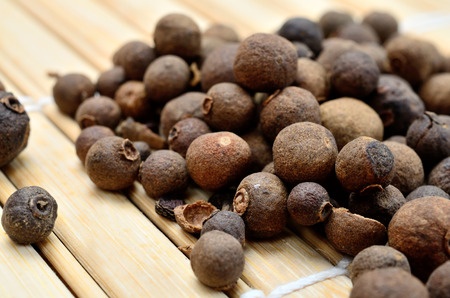
Allspice is a cured, unripe berry from a tropical evergreen tree.
This powerful spice comes from the dried fruit of the pimento tree.
It is often called Jamaica pepper, pimenta, or pimento, among other geography-specific nicknames.
It grew originally in Central America but is now found in various parts of the Caribbean, and Mexico.
The tree bearing the spice is known scientifically as Pimenta dioica L. Merill and has gradually spread throughout the world to be used in various types of cuisine because of its unique flavor and its healthy quality. The berries are picked when they are ripe and allowed to dry in the sun. drying turns them to slightly shriveled, hard berries known as allspice. These are then ground up into spice for culinary use or the essential oil is extracted from them.
The name allspice came about because the dried brown berries which look like large peppercorns, smell and taste like a mixture of cinnamon, cloves, and nutmeg. When ground and macerated it releases aromatic notes reminiscent of these particular spices.
The spice has no specific nutritional value.
How To use
Whole Allspice
- Mix equal amounts Whole Allspice with whole black or mixed peppercorns in a peppermill to create your own special spice blend.
• Add 4 to 6 berries to water when poaching fish.
• Use in French dressing, spiced shrimp, pot roast of beef or game, marinades for beef or fish, and pickled beets.
• Add 1 to 2 berries to each pint bread and butter pickles or mixed pickles.
Ground Allspice
- Add 1/8 tsp. to 1 lb. of ground beef to make Swedish meatballs.
- Use in French dressing, beets, baked beans, squash and carrots.
- Add a dash to asparagus, chicken or tomato soups.
- Use in cakes and buns, spiced tea, biscuits and cookies, fruit pies and French toast.
Safety Considerations
Although it is a useful spice to have in the store cupboard, it can cause serious allergic reactions in some hypersensitive individuals.
If you have existing gastric ulcers or ulcerative colitis, it is best to avoid using this spice, as it can exacerbate the conditions.
Always consult a health or medical professional before making any major changes to your diet.
Products
Please note this page contains links to our affiliate marketing partner. Please read our affiliate disclosure.
Good one